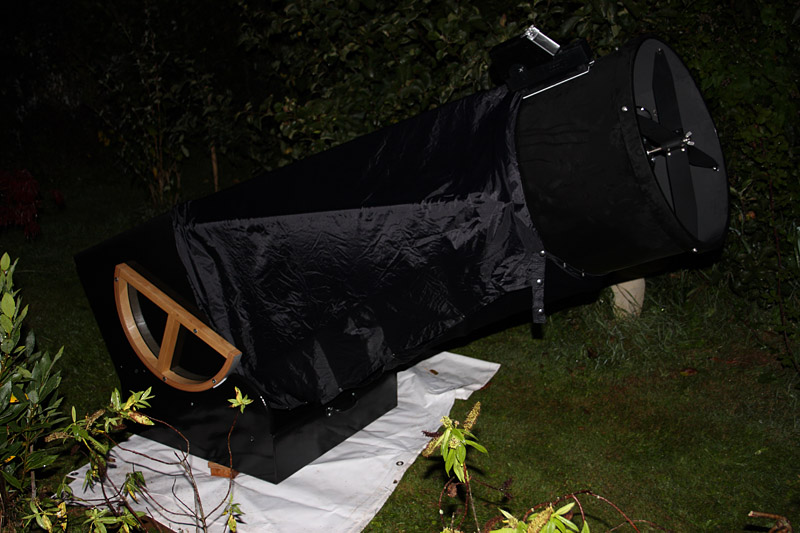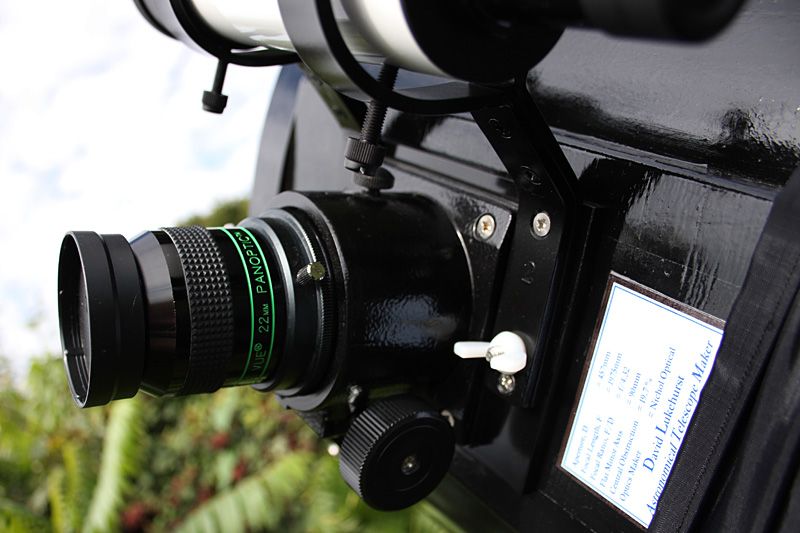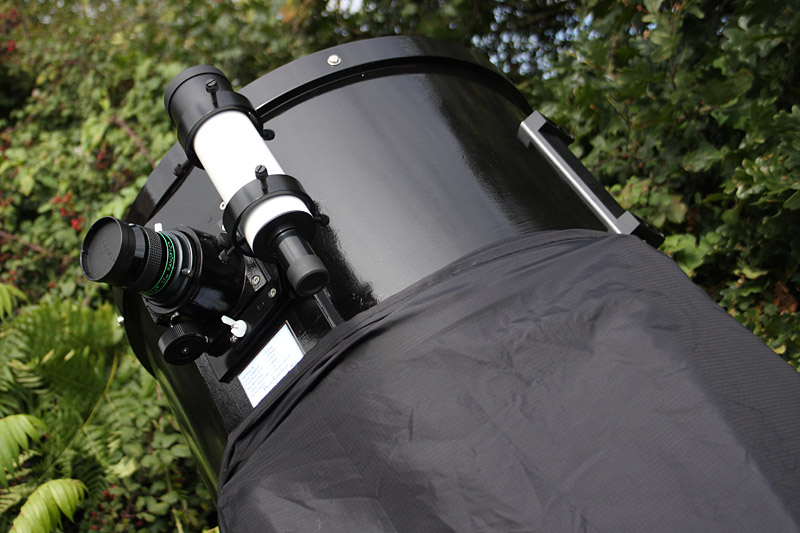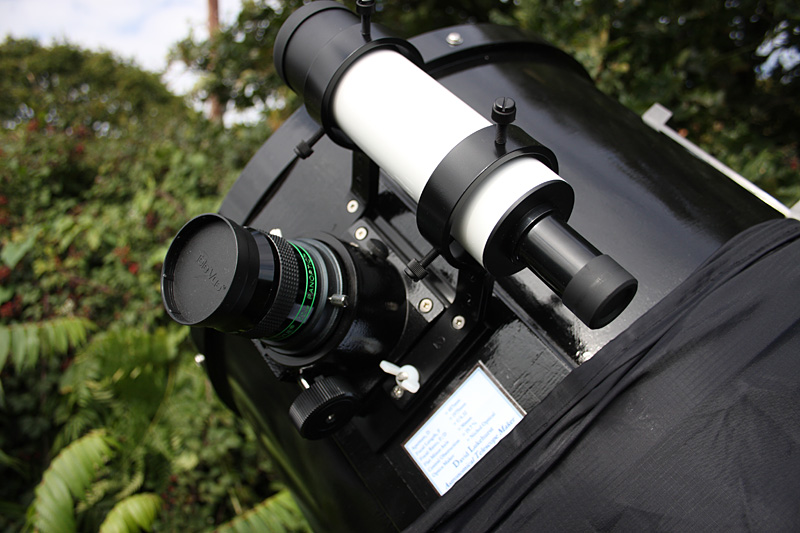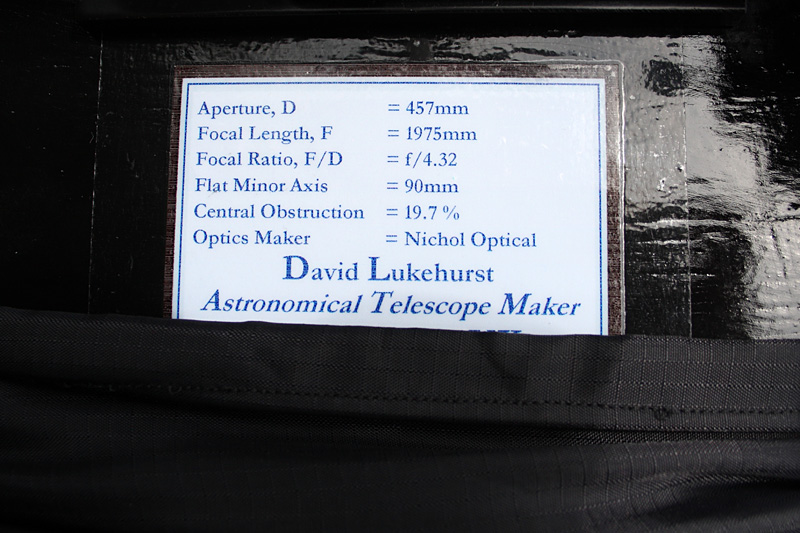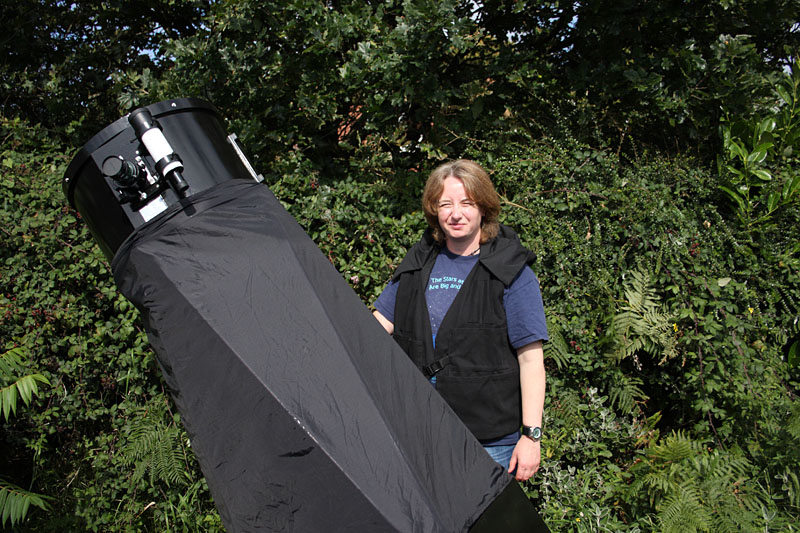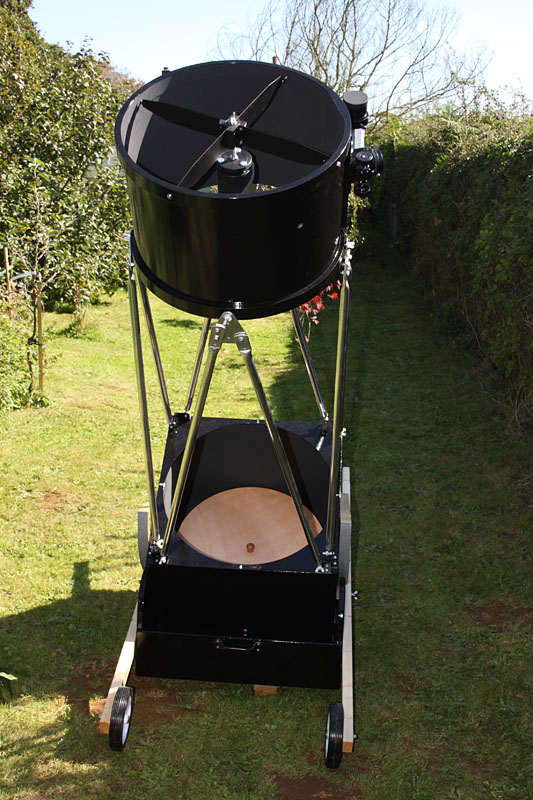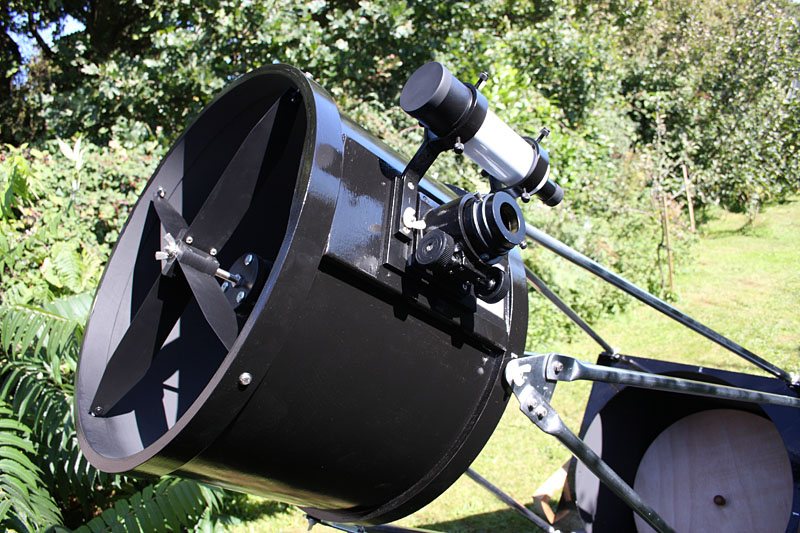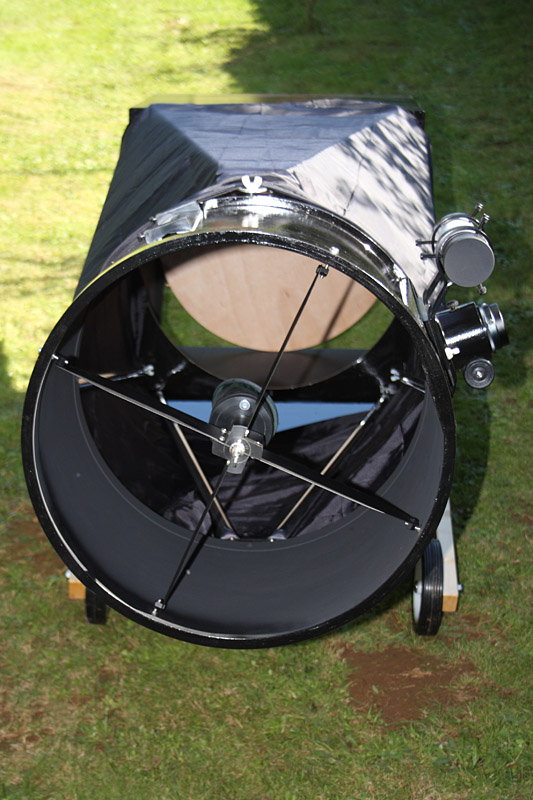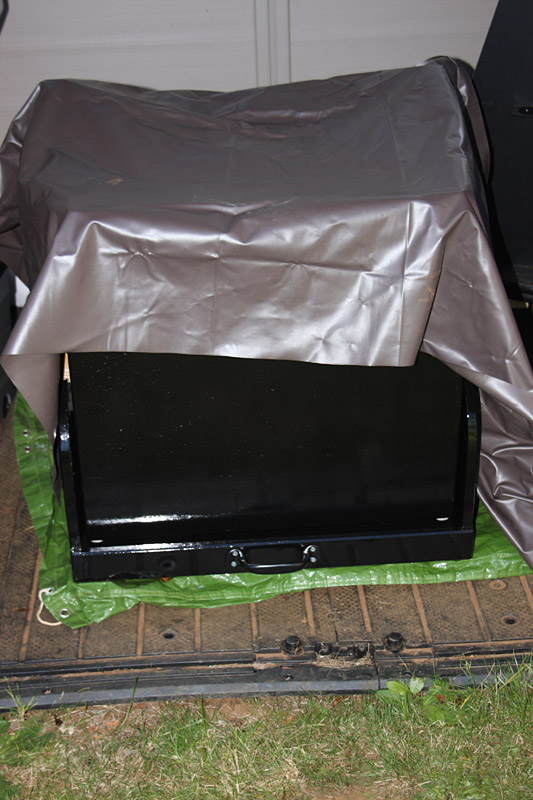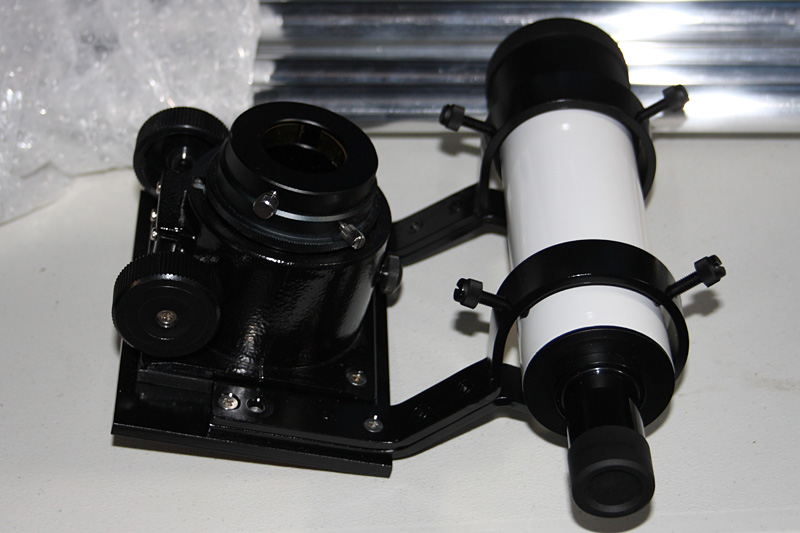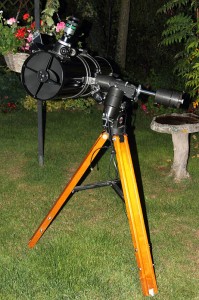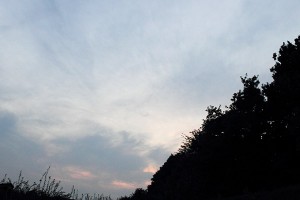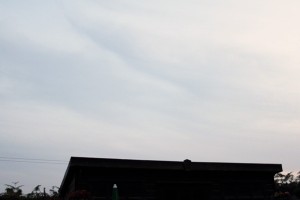
The clouds magically cleared earlier in the evening and the sky was predicted to remain clear until around 2200, so I wheeled the Big One out and set it up for its second look at the sky.
The sky wasn’t the best last night, both the seeing and the transparency were poor as fog arrived in the middle of the session and the humidity was 80%. I know that McDonald Observatory close their domes when the humidity gets to something like 7% there, as does my friend Jimi Lowrey with his 48inch, but their West Texas skies are mostly clear, unlike over here in the UK where we have to take what we can get. As the summer was cool and damp, the ground hasn’t had a chance to dry out, so we’re getting lots of fog and mist which hampers observations, especially of faint objects.
As I was setting up I looked at the primary mirror and…’What the f***? Scratches??!’…I knew it couldn’t be scratches, as the mirror was fine the other day, so I got a large rocket blower I use for cleaning my cameras and lenses, used it to blow on the mirror and the ‘scratches’ vanished. They were fibres from the tissue paper and, inexplicably, a dog hair had also found its way in there. ‘Inexplicably’ because the dogs (long-haired dachshunds) have been nowhere near the scope apart from Joe deciding to cock his leg on it the evening I brought it home (fortunately, being a dachshund, albeit a standard one [largeish], his legs are too short to allow any damage to be done!), although a dog hair could have fallen from my jacket or the shroud, as I take that in the house to dry off when it gets wet with dew.
Date: 24th September 2011
Conditions: Cloudless but murky, fog later. 80% humidity – normally inconspicuous light domes were visible
Seeing: IV
Transparency: III (for seeing and transparency scales used, click here)
NELM: Not checked but probably no better than 6.0, if that
Equipment: 18 inch f/4.3 dob with 35mm Televue Panoptic (56x), 22mm Televue Panoptic (90x) and 8mm Televue Radian (247x).
I began with a general look round and decided on a couple of bits of eye candy to look at first. I aimed at the Ring Nebula, M57, and I am sure I detected some colour in it, green with hints of pink. Subtle but I don’t think I was imagining it. The last time I saw colour in M57 was in Texas in 2008 and that was with Jimi’s 48 inch. I decided to try some high magnifications, 395x (5mm Radian) and 658x (3mm Radian) but, thanks to the poor seeing, it was as mushy as hell (especially at 658x) so I put those eyepieces away. Also, the big mirror needs more cooling down time than I’ve given it. It is still fairly warm during the day and, although the mirror is not especially thick at 40mm (1.5 inches), it still needs over an hour, probably more, to cool.
Then I headed over to M27, the Dumbell Nebula, which was very bright and also with a hint of colour, this time green. Although the conditions weren’t good, M27 was incredibly bright and detailed. Knock-your-socks-off bright and detailed, too. 18 inches is the largest aperture I have looked at M27 with, so it’ll be nice to have a look on a much better night.
I was thinking of selling my 35mm Panoptic and, indeed, I’ve advertised it in our astronomy society’s monthly newsletter, mainly because the exit pupil would be too large for use with the 18 inch, thanks to the focal ratio of the scope, and £250 would come in handy at the moment. However, I decided to give it a try in the big scope and, judging by what I saw, I won’t be parting with it after all and I will withdraw it from sale. NGC 7000 and the Milky Way through Cygnus was spectacular. The exit pupil is a tad too big but not by much, so but it actually doesn’t matter. I will definitely need a Paracorr with this one, though.
Using a stepladder takes a bit of getting used to. At one point, I’d forgotten that I was standing on the second step and stepped off, landing on my bad ankle harder than I’d expected.
So much for the messing around with eye candy. I’d brought some galaxy group information out with me (one of the free downloadable guides from my friend Alvin Huey’s website – follow the links to Downloadable Observing Guides) and went for some galaxy groups in Pegasus. The NGC 7436 group was well placed so I went for that. The notes are sparse.
NGC 7436 – Bright and round with very slight brightening towards the centre. NGC 7433 is right next to 7436 and together at lower power the two galaxies look like an elongated glow east-west. 90x, 247x
NGC 7433 – Reasonably bright elongated glow right next to NGC 7436. 247x
NGC 7435 – Fairly bright, oval, brighter middle. 247x
NGC 7431 – Barely seen elongated glow. 247x
By this time, the transparency had got so bad I decided to pack up, go in and watch Match of the Day. Car lights coming down the hill were huge beams and the kitchen light coming on was a dim glow through fog. A look at NGC 7331 confirmed the transparency had deteriorated, although it wasn’t great to begin with and an hour later the clouds were back.
The weather forecasters are predicting an ‘Indian Summer’ for the next week into October, so I am hoping we get a few more clear nights – preferably with no fog. The actual summer was dismal, so an Indian one will be very nice indeed.

Joe
